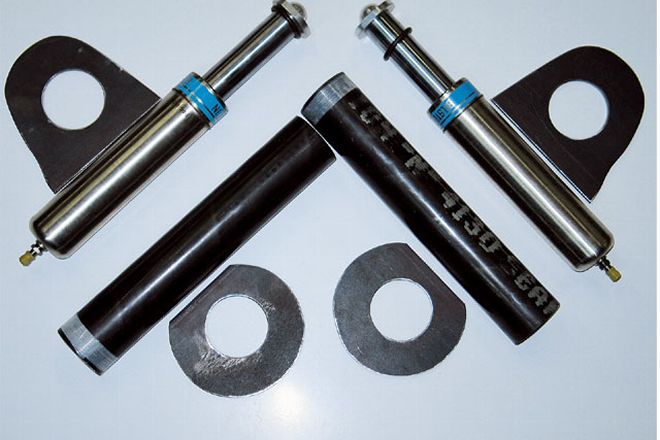
 Jerrod Jones
Former Editor, Off Road
Jerrod Jones
Former Editor, Off Road
Like any other act of evolution, your suspension can only stay the same for so long before you start tinkering. Whether it be a bolt-on kit or a custom job, you'll probably look and (if not immediately) eventually find little ways your spring stuff can be improved. One of the biggest little improvements we've experienced a before-and-after with are hydraulic bumpstops. Hydraulic bumpstops like these Bilstein units (or air bumps as they are inappropriately nicknamed) have large shafts that can travel 4 inches up into their own bodies before stopping. They are pressurized with nitrogen (via a Schraeder valve on top) to your desired rate and get progressively stiffer as they compress and the cavity above the bumpstop's piston gets smaller (creating greater pressure to deflect the compression as it compresses). And, no, we really can't make a comparison with urethane bumpstops: they're not even in the same league.
Hydraulic bumpstops were derived for the race scene, but in the last five or so years have made an exaggerated leap in placement on off-road toys and street-legal trucks that are greatly benefiting from the extra mod. T and J Performance has seen this trend and responded with reasonably priced hydraulic-bumpstop installation kits for the popular XJ Cherokees (and Comanches) that everyone seems to be buying up nowadays. We went to check out a front kit being installed. Though the kit is very simple and straightforward, it'll require some welding skills to place.





